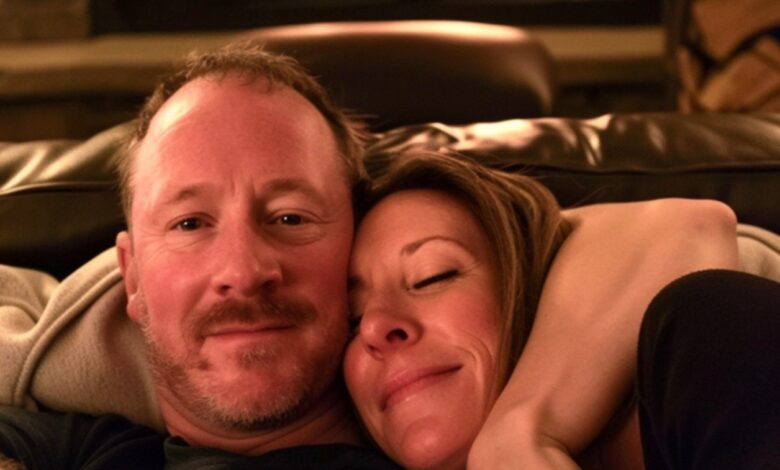
The Meaning Behind the ‘WC’ Sign: A Journey Through Bathroom Terminology
Have you ever noticed the letters WC outside a public restroom and wondered what they stand for? You’re not alone—people across the globe often puzzle over this cryptic abbreviation.
The Mystery of WC
Simply put, WC stands for water closet, a term historically used to describe a small room containing a toilet and sometimes a sink. While this might clarify the letters, it doesn’t exactly make the term feel more logical—similar to how “restroom,” “bathroom,” or “loo” can seem perplexing in their own right.
In 2020, a TikTok video featuring a couple named Shelby and Dylan hilariously highlighted the differences in bathroom terminology between Americans and Canadians. Walking past a sign reading washroom, Dylan quipped:
“What in the world is a washroom? And what are they washing in there? Oh, it’s a restroom. The only thing I wash in there is my hands.”
Shelby, off-camera, cheekily countered, “Do you rest in a restroom?”—to which Dylan admitted: “Good point. They both don’t make much sense.”
The video sparked a lively online debate about what to call the sacred space. Some commenters preferred “bathroom,” while others leaned toward “toilet,” “washroom,” or “restroom.”
One person humorously recounted a Disneyland visit where asking for the washroom led them to the laundromat. Another chimed in with, “Wait until he finds out about water closets.”
What Is a Water Closet?
According to Merriam-Webster, a water closet refers to “a compartment or room with a toilet” or “a toilet bowl and its accessories.”
Historically, the term reflects a time when specific rooms served distinct purposes. Bathrooms were for bathing, restrooms for resting or grooming, and the water closet for, well, using the toilet. As indoor plumbing became more common in the late 19th century, these spaces gradually merged into the modern bathroom we know today.
The water closet, however, often remained a separate, enclosed room in some homes and public spaces, particularly in Europe and international facilities. You’ll frequently spot the abbreviation WC in airports, hotels, or restaurants, catering to a globally diverse audience.
WC Across Cultures
Online forums like Reddit often dive into the quirks of global bathroom terminology. One post posed the question, Why is a public WC called a bathroom if there’s no bath?
A user responded:
“Americans might ask, ‘Why is it called a WC if it isn’t even a closet?’”
Others shared cultural takes:
- In Russian, it’s referred to as a room without windows, even if there’s a window.
- In Esperanto, it’s necesejo, meaning “necessary place.”
- Canadians frequently use washroom, which is also popular in parts of the U.S. Midwest.
Restroom vs. Bathroom vs. Washroom
The terminology debate continues, with many feeling washroom is the most logical since washing happens there. Meanwhile, terms like restroom or bathroom remain euphemisms.
One Redditor summed it up best:
“Best one, I think. You should be washing in there—not resting.”
What Do You Call It?
Whether you say WC, restroom, bathroom, toilet, or washroom, everyone has a favorite term. What’s yours? Share your thoughts, and don’t forget to spread this story to find out what others think!
I Shared a Photo of My Partner and Me on Facebook for the First Time & Instantly Received a Message: ‘You Need to Get Away from Him. Right Now

Social media has a way of creeping into your life, becoming a part of your relationships, whether you like it or not. It’s harmless for the most part — cute pictures and updates for friends and family. But sometimes, things take a turn you never see coming.
Mark and I had been together for almost a year. Honestly, he was the perfect boyfriend. Sweet, caring, and always making me laugh, whether we were out hiking or just watching TV on a lazy Sunday. I felt so lucky to have him in my life. So, I figured it was time to make things official on Facebook.
We were on a hiking trail one afternoon when we snapped a picture together. It was cute — us smiling with the sun shining behind us. “Just me and my favorite person on our latest adventure!” I captioned it, adding a couple of heart emojis. I shared the post, excited to share a bit of our happiness with the world.
Then, ten minutes later, I got a notification that made my stomach drop. It wasn’t a like or a comment. It was a message: “YOU MUST RUN FROM HIM. NOW.”
I stared at my phone, my heart pounding. Who would send something like that? I clicked on the profile, hoping for some clue, but there was nothing — no info, no pictures, just a blank, empty page. The message itself was terrifying enough, but this? It was like a ghost had sent it.
I glanced at Mark, who was busy tossing our backpacks into the car, completely unaware of the storm building inside me. Should I tell him?
My mind raced, but before I could even process what was happening, another message popped up: “Don’t tell Mark anything. Listen carefully. Smile, don’t be aggressive with him. You don’t know what he’s capable of. You got it?”
I could feel the blood drain from my face. What was this? Who was sending these messages? And why were they so certain I was in danger?
“I’m meeting my mom for lunch tomorrow,” I said casually over breakfast, trying not to let my voice tremble.
Mark didn’t look up from his coffee right away. “Really? You didn’t mention it before.”
“Oh, yeah,” I replied quickly, my heart racing. “She called last night. Last minute thing.”
Mark finally met my eyes, his expression unreadable. “Alright,” he said slowly.
I tried to focus on my coffee, but all I could feel was the weight of his gaze as if he was trying to see straight through me.
The next day, I left the house. As I slipped out the door, I could feel Mark’s eyes on me. I tried to act normal, but my stomach was in knots. Every time I looked back at him, there was that same unreadable look on his face. Was he suspicious? Did he know something was wrong?



Leave a Reply